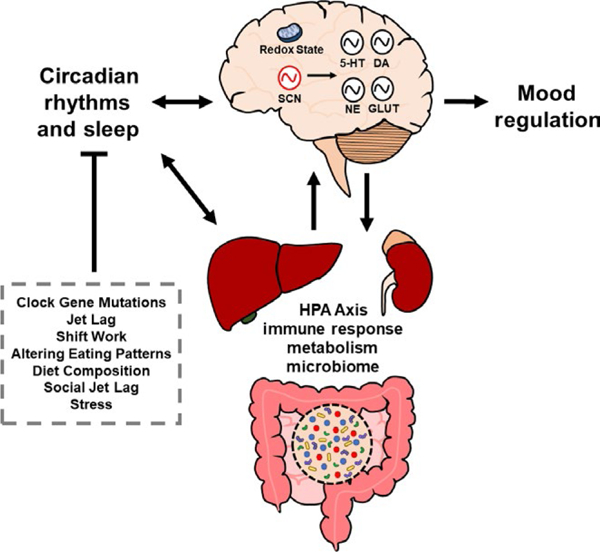FIGURE 3.

The circadian system interacts reciprocally with a variety of physiological processes and systems that are involved in mood regulation. These processes include monoamine and glutamatergic signaling, HPA axis function, immune response, metabolism, and microbiome. Both environmental and genetic disruptions to circadian rhythms may produce alterations in these systems that ultimately affect mood. SCN, suprachiasmatic nucleus; 5-HT, serotonin; DA, dopamine; NE, norepinephrine; GLUT, glutamate
